Sedunnic Armed Forces (Pacifica)
| Sedunnic Armed Forces | |
|---|---|
| Rammstovd | |
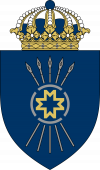 Coat of arms of the Sedunnic Armed Forces | |
| Motto | Aemm sufē saffuljā (Sedunnic: "Confident in our ability") |
| Founded | Antiquity |
| Current form | 2014 |
| Service branches | |
| Headquarters | Essela (peacetime) |
| Leadership | |
| Commander-in-Chief | Sedunnic Government |
| Minister of Defence | Derrns Kappsaty |
| Supreme Commander | General Maks Fejellienn |
| Manpower | |
| Military age | 18 |
| Conscription | 11-month service obligation |
| Active personnel | 210,000 |
| Reserve personnel | 237,000 |
| Deployed personnel | 2,000 |
| Expenditures | |
| Budget | $141.36 billion (2022) |
| Percent of GDP | 4.2% of GDP (2022) |
| Industry | |
| Domestic suppliers | STT Levē Kallnhē Botna SG SLU Sedtrē ASA |
| Foreign suppliers | Karnetvor Stoinia |
The Sedunnic Armed Forces (Sedunnic: Rammstovd, literally "the War Authority") is the government agency that forms the military of Sedunn. It has five service branches: Army, Navy, Air Force, Marine Force and the so-called Teleresources branch.
Military service is mandatory in Sedunn for both men and women, but after several reforms in the 1990s, each year only a minority is conscripted for training after the mandatory entrance assessment tests. The active force is about 210,000 military and 124,000 civilian voluntary personnel. The reserve force is about 237,000 military personnel including part-time, conscripted and volunteer personnel. The total personnel strength is about 570,000 people, including civilians. The Armed Forces maintains a focus on expeditionary warfare and rapid deployment. It maintains a high power projection capability through its navy.
Sedunn is a nuclear triad power with approximately 355 warheads that are delivered by plane launched-missiles, intercontinental ballistic missiles and submarine-launched cruise missiles.
Most of the equipment of the Sedunnic Armed Forces is manufactured domestically by state-owned companies. Military funding is by tradition high.
Mission and doctrine
The purpose of the Sedunnic Armed Forces is to prevent a foreign occupation of Sedunn and secure its continuing existence as an independent nation by defending the nation, its allies, and its interests in the world, and to assert the territorial integrity of Sedunn and the rule of international law. Furthermore, it shall keep the cross-Pacific trade routes open, support the civil society in case of natural disasters, and support international peacekeeping efforts. Therefore, most combat and support units are equipped and trained to deploy at very short notice to places far away.
The Sedunnic Armed Forces pursues doctrines that favour manoeuvre warfare, making use of of high mobility and modularity. The goal is often to gain and maintain overwhelming local fire superiority by the means of combining arms. Military and civilian efforts are combined under the concept of total defence. These abilities are seen as key components to achieving war deterrence. Especially the Navy is also used in access/area denial missions such as during the Tasternine Crisis. Sedunnic doctrines and military training also favour deception through different means.
The Sedunnic Armed Forces also perform several ceremonial duties such as forming the Palace Guard and honorary guards during state visits.
Sedunn has issued a guarantee of independence to Transsuneria and is a founding member of the CE.
International deployments
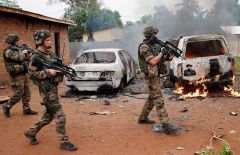
Following the guarantee of independence to Transsuneria and the completed peacekeeping mission, Sedunn has committed forces to permanent basing in the nation. Sedunn operates the Floodport Base, which is the largest military base in Transsuneria. It is home to the Sedunnic 66th Infantry Battalion, air defence and various support units, that are all part of the Transsunerian 1st Brigade. The Sedunnic Navy also often keeps major surface combatants and support vessels in the region. The CE allies also rotate fighter craft for the Joint Air Policing mission, which Sedunn partakes in.
The Navy conducts patrol missions on the cross-Pacific trade routes.
Personnel
The Sedunnic Armed Forces is a mix of professional, part-time, conscripted and volunteer personnel. In total almost 570,000 people serve in the Sedunnic Armed Forces, of which about 124,000 are civilian full-time employees. There are five personnel categories: civilian, standing (active, full-time employed), part-time (reserve), volunteer (reserve), and ready reserve (conscripted reserve). The four military categories differ in peacetime readiness, the amount of training they receive, and sometimes also in capability and equipment. The 210,000-strong standing force consists of full-time employees and has a high readiness and capability. The part-time category has a somewhat lower readiness but a higher proficiency in handling complex equipment and missions than conscripts and volunteers. They typically train or serve one weekend per month and for at least two continuos weeks once a year. The volunteer category has a high readiness but duties and equipment with less complexity. Volunteers train at minimum one week per year. The ready reserve category mainly forms a personnel reserve to replace losses or augment certain units. They typically train for one week every two years.
The distribution of personnel between the services and categories is as follows:
| Service | Standing | Part-time | Volunteer | Ready reserve | Total |
|---|---|---|---|---|---|
| Army | 72,200 | 93,400 | 30,000 | 41,400 | 237,000 |
| Navy | 54,000 | 11,000 | - | 5,000 | 70,000 |
| Air Force | 49,300 | 33,700 | - | 5,000 | 88,000 |
| Marine Force | 26,800 | 6,900 | - | 8,400 | 42,100 |
| Teleresources | 7,700 | - | 2,000 | - | 9,700 |
| Total | 210,000 | 145,000 | 32,000 | 59,800 | 446,800 |
In total, about 1.2% of the population is in the Armed Forces in some capacity, of which almost 90% are voluntary personnel. About 18% of the military personnel are female.
Additionally there is the passive reserve which is all personnel that have once served in the Armed Forces but are either too old, or those who have chosen not to enlist in volunteer forces, that could be called to serve again to replace heavy losses in a prolonged conflict. Several million people are listed.
Recruitment

Military (or civilian) service is compulsory from the age of 18 for all men and women (women since 2017). When turning 17, all Sedunnic citizens take entrance assessment tests (that may be postponed up to the age of 20 under special circumstances). Based on the results, different service alternatives are offered, of which one has choose one. The training is normally at minimum seven months. While many still are conscripted, the yearly number of conscripts has been greatly reduced since the 1980s, more due to modernisation requiring less personnel than an actual disarmament.
After having completed the training, the recruits are given a choice to continue serving in a professional career in one of the standing units, join part-time units, volunteer units or the ready reserve.
Command structure
The highest ranking officer in the Sedunnic Armed Forces is the Supreme Commander, currently General Maks Fejellienn. The Supreme Commander is appointed by the Sedunnic Defence Ministry and leads the Armed Forces according to the policy set forth by the Government.
The Supreme Commander leads the Headquarters of the Armed forces, which consists of two staffs: the Operations Command, which plans, directs and controls the usage of the forces, and the Training Command which controls recruitment and training of the personnel in the forces. There are five service branches in the Sedunnic Armed Forces: the Army, the Navy, the Air Force, the Marine Force and the Teleresources. Each service branch has its own operations commands and training commands. The Special Forces, the Military Intelligence Service, the Military Materiel Agency and War Research Agency also belong to the Armed Forces and answer directly to the Headquarters.
Service branches
Army
The Army (Trammtasstlē, "Field Forces") is responsible for land operations and is the largest and oldest service branch of the Sedunnic Armed Forces, having about 237,000 personnel. It is composed of three corps that have different composition and missions. There are also various smaller, independent units that are under the direct command of the Operations Command.
The Army's combat force structure is the following:
- I Corps: Highly modular and mobile manoeuvre units, with emphasis on rapid deployment nationally as well as expeditionary capabilities, manned by the standing and part-time categories
- 1st Armoured Division: armoured and mechanised units
- 2nd Armoured Division: armoured and mechanised units
- Mountain Division: infantry that is highly mobile in mountainous terrain
- Airmobile Division: highly mobile infantry that performs air assault, extra high readiness
- II Corps: Supports and commands expeditionary missions. The corps only has a handful units under permanent command, it mainly receives units according to need
- III Corps: It is composed of independent rapid response local defence battalions that are mainly manned by the volunteer category. They guard and protect specific areas and buildings, they also assist in the mobilisation of the rest of the army. They mainly inherit personnel and equipment from active and conscripted units
In total, there are two armoured brigades, three mechanised infantry brigades, four infantry brigades, three combat aviation brigades and four sustainment brigades. Independent units include coastal infantry battalions, the Guard Infantry Regiment, long-range anti-aircraft battalions, coastal defence missile battalions, 37 local defence battalions and various supporting battalions. The mechanised and infantry brigades are air transportable into theatre within 96 hours or less.

The following major equipment is used or kept in reserve storage by the Sedunnic Army (including derived and speciality versions):
- 450 main battle tanks (VEV 14)
- 470 infantry fighting vehicles (AKS 98)
- 1,700 armoured personnel carriers (S98 "Teykkul", S74 JMN and S14)
- 100 self-propelled howitzers, 155 mm (S87 "Lirladoll" and S14 "Kotann")
- 200+ towed howitzer (105 mm S88 "Kamp" and 155 mm S90 "Mē")
- 60 mortar carriers (S98 "Teykkul" and S14 chassis)
- 110 MLRS (wheeled and tracked)
- 110 self-propelled SHORADs (wheeled and tracked)
- 100 Mobile long-range surface-to-air missile launchers with anti-ballistic missile capability
- 230 armoured recovery vehicles
- 65 armoured vehicle-launched bridge (VEV 14 chassis)
- 150 attack helicopters (KH-88 Gorod)
- 450+ cargo and utility helicopters
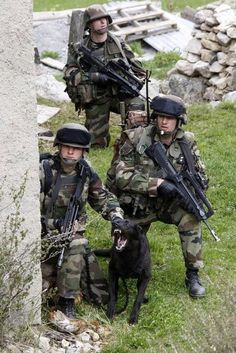
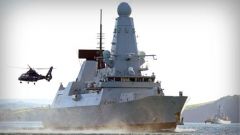
The Navy (Seiftasstlē, "Sailing Forces") composes four components: the Surface Forces, the Submarine Forces, the Auxiliary Forces and the Naval Air Service. It includes in total about 70,000 personnel, 75 commissioned ships of various size, additional auxiliary ships, about 86 ASA Hotvemm aircraft and about 177 other aircraft. The Navy is classified as blue-water with its significant amphibious and replenishment capabilities beyond its own home region. There are no fixed operational formations of combatant ships, instead temporary naval battle groups are formed for specific missions, typically around the aircraft carriers or amphibious assault ships. The Sedunnic Coast Guard is not part of the Armed Forces being a component of the Sedunnic Police.
In Sedunnic, vessels are given the prefix "SSR", short for Sedunnō Seiftasstleō Riks ("Sedunn's Navy's Ship"). In Austral, the prefix "SNS" ("Sedunnic Navy Ship") is used instead.
Active ships
There are 75 ships in commission including 2 aircraft carriers, 6 amphibious warfare ships, 16 destroyers, 8 frigates, 12 corvettes, 4 ballistic missile submarines, 11 attack submarines, 2 submarine tenders, 9 patrol boats, 10 mine countermeasures vessels and 40 miscellaneous auxiliary and support vessels. The total commissioned displacement of the Sedunnic Navy is approximately 670,000 tonnes.
There are six major naval bases in use, four in Mainland Sedunn, one in the Remetull Archipelago and one in Transsuneria. Additionally there are smaller bases in Sedunn called stations.
- Essela: Sometimes called the military capital of Sedunn, it is home to several Armed Forces commands, army, air force, naval and marine units. Aircraft carriers and many of the transport vessels are based there, as well as the Marine Corps and larger auxiliary vessels. It is located 15 km north-west of the capital of Sedunn, Grovne.
- Ullenst: maintains some of the destroyers and the frigates. Sedunn's largest shipyard is located in Ullenst.
- Akskamm Complex: Underground naval facilities and regular docks clustered along the west coast of the Letted peninsula between Ilosred and Troma. It is home to most of the destroyers and submarines as well as the main Naval Command.
- Durivv: supports all operations in the Mediterranean Sea as well as the sea of Epptryn. Currently the most important surface combatants stationed there are corvettes. Durivv is the third largest port city in Sedunn after Grovne.
- Gafsred: supports all operations in the South Pacific Ocean. Gafsred and neighbouring Tarvem have among the largest ports of the islands in the ocean.
- Floodport: supports operations in the northern areas of the South Pacific Ocean and also hosts Transsunerian and other CE forces.
Air Force
The Air Force (Lytretasstlē, "Air Forces") is the aerial warfare branch of the Sedunnic Armed Forces. It has a strength of about 88,000 personnel. The main combat force includes 340 ASA VOT 14 Hotvemm multirole fighter aircraft in 14 squadrons, two CAS squadrons, 25 strategic bombers and five long-range air defence battalions. The total number of active aircraft is 624.
The Air Force has 16 main bases. After mobilisation many of the squadrons disperse to temporary bases as a measure against nuclear weapons and pre-emptive airstrikes.
Current aircraft inventory (wip)
Marine Force
The Marine Force is responsible for executing expeditionary amphibious warfare and operating in maritime littorals, constituting a significant part of Sedunn's power projection ability. It relies on the Navy for sealift to provide its rapid deployment capabilities but it operates 93 transport/utility and 23 combat helicopters of its own. The Marine Force has a strength of about 42,000 personnel and its combat structure includes the Marine Division with three marine brigades, two aviation brigades and one logistics brigade.
Teleresources
The Teleresources (Jokala'lē) is a branch that is responsible for cyber, space and electronic warfare and signal intelligence. It operates anti-ballistic missile systems for intercepting incoming warheads in space, during the midcourse phase of ballistic trajectory flight. It also develops and operates space resources such as satellites. It has an active personnel strength of about 9,700, including about 2,000 volunteers in cyber warfare units. The Teleresources is the youngest branch, founded in 2011. It fields electronic warfare units that operate under the command of the army divisions.
Special forces
The Special Operations Troops (Leynlē Uttsȳ Lekserris) use unconventional means to conduct special operations. The number of troops is secret, but there is a total of 15 special forces companies. There are four different services within the force:
- Ensi Uttsȳ Rakra'is (EUR) - Special Combat Service: Engages and destroys targets of great significance to the enemy, rescues people captured by the enemy or held hostage, and conducts ship boarding missions.
- Ensi Uttsȳ Lynyvis (EUL) - Special Reconnaissance Service: Gathers intelligence on activities, certain individuals, or anything of strategic importance.
- Ensi Uttsȳ Hemmvevasis (EUH) - Special Electronic Warfare Service: EM compatibility and deception; electronic masking, probing, reconnaissance, and intelligence.
- Ensi Uttsȳ LTUS-Lekserris (EULTUSL) - Special CBRN Operations Service: Its tasks range from CBRN-specialised intelligence gathering, combat in extremely contaminated environments, disarmament of CBRN weapons and critical containment of C-, B-, and R-events.
Nuclear weapons
The Sedunnic Armed Forces has a nuclear arsenal of 355 warheads spread out in three different delivery systems forming a nuclear triad of plane launched-missiles, intercontinental ballistic missiles and submarine-launched cruise missiles. The Air Force's VOT 14 D strike craft can be equipped with plane launched-missiles. The intercontinental ballistic missiles have an estimated range of more than 5,000 km.
Sedunn has been a nuclear power since the completion of the Case Yellow Fox program in 1957, in which Sedunn and Ryccia jointly designed and tested an atomic bomb intended to be deployed against the Imperialists in the Great War. Sedunn has signed but not ratified the WF Treaty on the prohibition of nuclear weapons proclaiming its intent to disarm, should every other nation do so simultaneously[1].
Equipment and suppliers
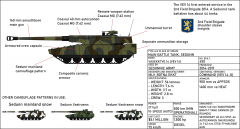
Most of the military equipment used by the Sedunnic Armed Forces is manufactured in Sedunn. An organisation called the Military Materiel Agency in Austral, organised under the Training Command, is responsible for research, preliminary testing and procurement of military hardware. Selling military equipment to other nations is strictly regulated by law (Law 1022-1912) and is normally only reserved to closely allied nations. However, Sedunn has been known to support rebellions and foreign powers with weapons when it has served a very specific purpose.
Major manufacturers of military hardware include the following.
- STT: surface combat ships.
- Levē Kallnhē: surface combat ships (traditionally), submarines, and other marine vessels.
- Botna: armoured and tracked vehicles.
- SG: cannons and missiles.
- SLU: electronic equipment, including radars.
- Sedtrē: firearms.
- ASA: aircraft.
- Orta: AUVs
Many other major Sedunnic companies are involved in delivering products not directly intended for combat, like the car manufacturers HF KJ, Limma KJ, aircraft manufacturer Levea and food manufacturer Inniennō Jul. Notable equipment include the Suvvtrefy 03 D assault rifle, VEV 14 main battle tank and the ASA VOT 14 Hotvemm multirole fighter.
Uniforms
The Sedunnic Armed Forces has three classes of uniform: combat dress, office dress, and parade dress.
Combat dress
There are two combat dresses in use. The field combat dress is manly used by the army but is also used by land warfare units of the air force and the navy. Five versions of the field combat dress exist with different camouflage colours for different climates. The sea combat dress is used by the navy.
| Field combat dresses | Sea combat dress | ||||
|---|---|---|---|---|---|
| Summer | Winter | Urban | Desert | Jungle | Sea |
 |
 |
 |
 |
 |

|
Note that the beret is normally used for garrison duty and more ceremonial occasions. The field cap is otherwise used.
Office dress
The office dress has similar use to the more internationally established term service uniform. The uniform is mainly used for ceremonial occasions and staff service, but also off-post activity. The Marine Force uses the Army dress and the Teleresources uses the Air Force dress.
| Office dresses | ||
|---|---|---|
| Army | Navy | Air Force |
 |
 |

|
The colour of the buttons and rank insignia, the beret patch and other details may differ from unit to unit. The Army office uniform is made to resemble the old K. 1880 field uniform.
Parade dress
The parade dress is for parades and ceremonial duties. The parade dress can be either an older uniform, such as the K. 1880 (retro), or the combat dress or the office dress with extra parade attire, such as the K. 1880 hat and white gaiters and gloves. A belt is normally included.
| Parade dresses | |||
|---|---|---|---|
| Army (modern) | Army (retro) | Navy | Air Force |
 |
 |
 |

|
Note that personnel in the navy and air force below OR 6 do not wear the parade hat, but a beret or equivalent.
Ranks and insignia
Symbols
Personnel, vehicles (both ground and air) and equipment of the Sedunnic Armed Forces are recognised by either the Sedunnic flag as a patch or painted, or by the Star of Limmvasd roundel painted or engraved. Military installations and buildings fly the Sedunnic flag, sometimes with a yellow pennant to set them apart from civilian counterparts.
-
Roundel of the Sedunnic Armed Forces.
-
Low-visibility version of the roundel of the Sedunnic Armed Forces.

